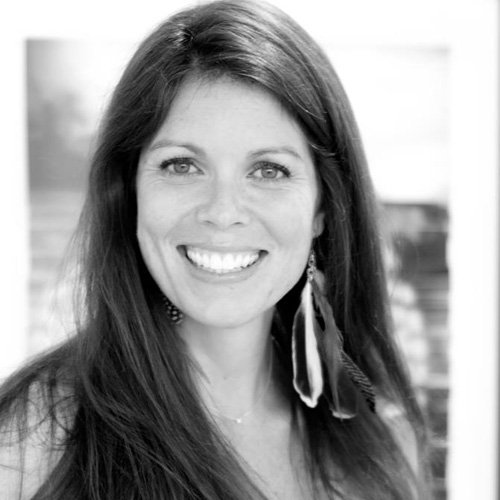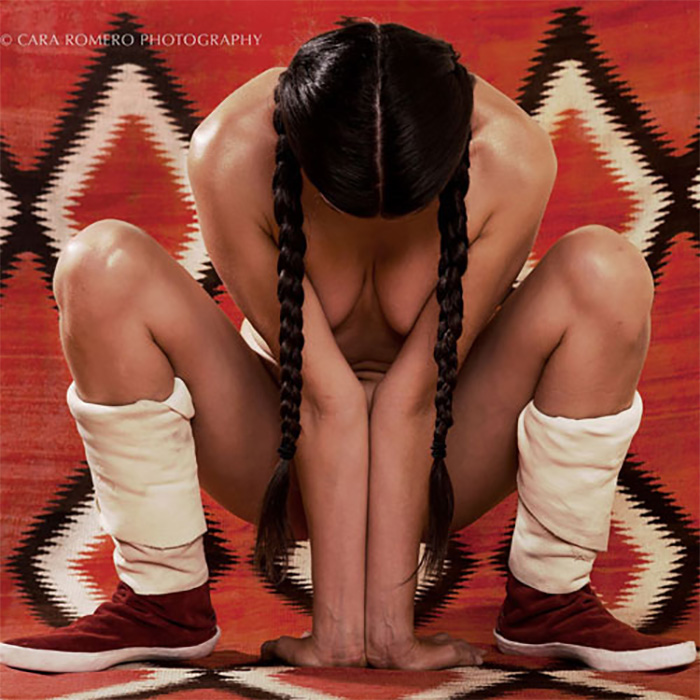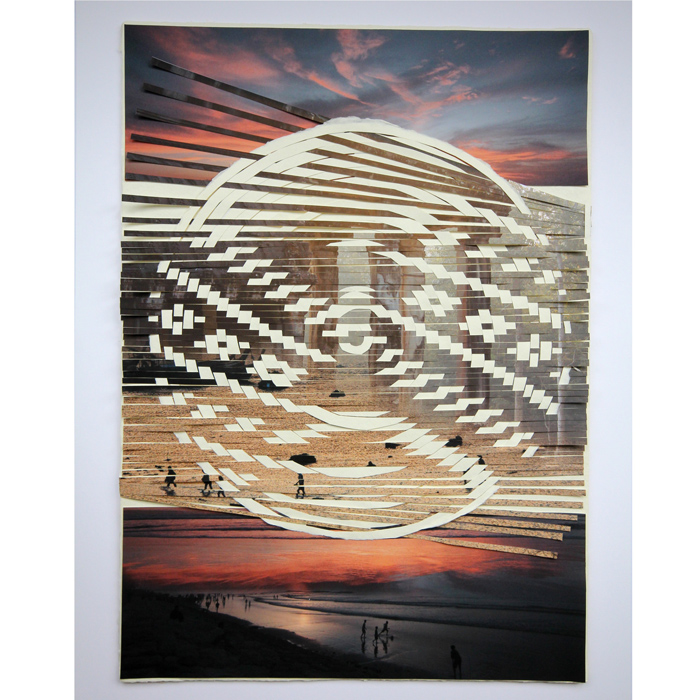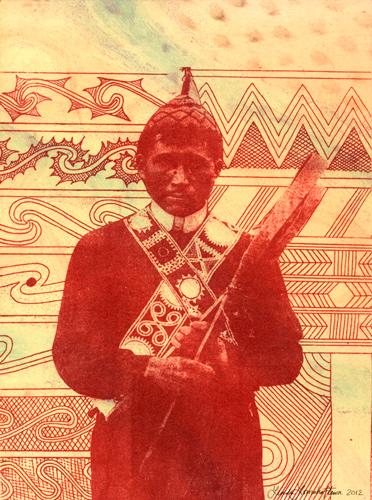
Picture by Gavin Brockis 2013
Sarah Sense
Sarah Sense creates complex imagery by weaving digital photographs into traditional Chitimacha basket designs which reference her own cultural heritage as an American with Native Choctaw and Chitimacha ancestry.
Describing herself as a colourist and her working process as being akin to painting, she exploits colour contrast between selected photographs, so that traditional basket designs emerge from her pictures, as well as being the very force which structures them. Her pan-American images literally weave together different perspectives, simultaneously dissolving geographical boundaries and celebrating the myriad of voices and visions which make up America’s indigenous population.
Sense’s project ‘WEAVING WATER‘ opened at RAINMAKER in June 2013 and three of her recent works are featured in CAPTURED at Rainmaker Gallery throughout March, April and May 2015.
For her project ‘WEAVING THE AMERICAS’, Sense travelled across 12 countries from Canada to Chile. She conducted interviews with and collected photographs of indigenous artists and communities, in a quest to understand the arts and cultures of America’s aboriginal peoples, which in the end deepened the meanings of her own work, and answered questions about the legacy of the indigenous craft skills particular to her own tribal heritage. Four pieces from this project were featured in our summer exhibition “MESSENGERS 2012“.
Artist's statement
Weaving photographs is a way of connecting with my ancestors and the tradition that has dissolved into a hand-full of talent. Through photographic processes, digital manipulations, cut paper and manual weaving, I had taught myself how to carry on a traditional form of weaving from my Chitimacha family. The weaving brought me into a life of meeting and knowing other traditional artists practicing in a variety of mediums and concepts. As my curiosity grew from North America into Latin America, I reached out to artists in their communities by traveling to them so that I may learn of their art and purpose for creation. Over recorded video interviews I heard the answers to the same questions repeating purpose from North, Central and South America.
In the theme of traveling to understand traditional art forms and purposes, I have continued the research. Through this process, a deeper understanding of the search has been lifted from the masked source material, unveiling the source as the purpose. As the first journey came to an end, I felt closer to the natural environment. I realized that Earth and I breathed the same breath and our hearts beat to the same pulse. It had become a transformative learning experience that brought me to being most comfortable when I was traveling and meeting new countries and other cultures to further prove this new idea that had filled my head and entered my weaving. I began to take interest in islands and the small plots of earth surrounded by water, and the ways which migration of culture moved by canoe and later by boats. Sarah Sense


